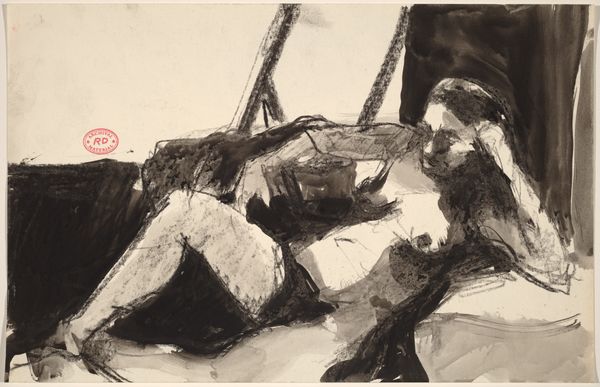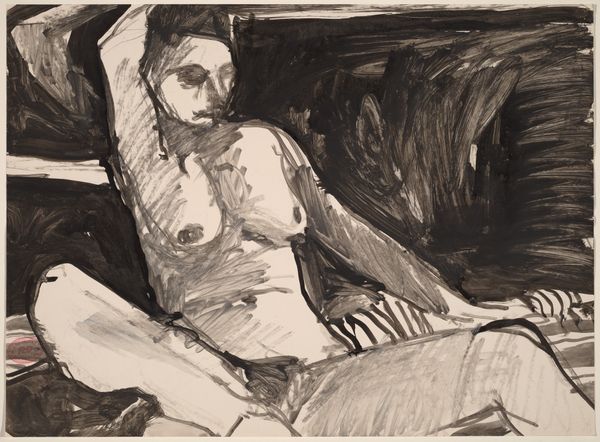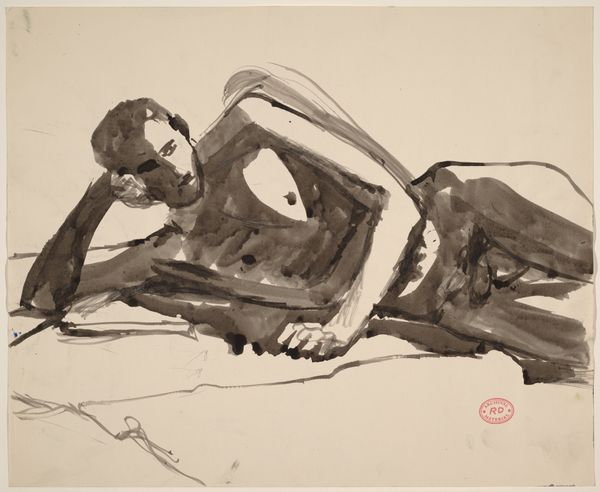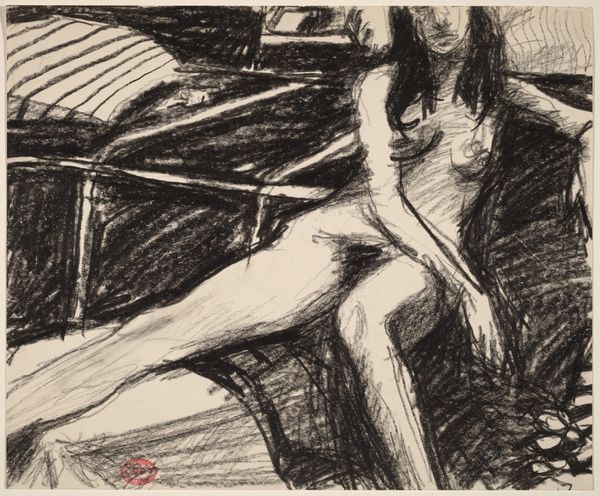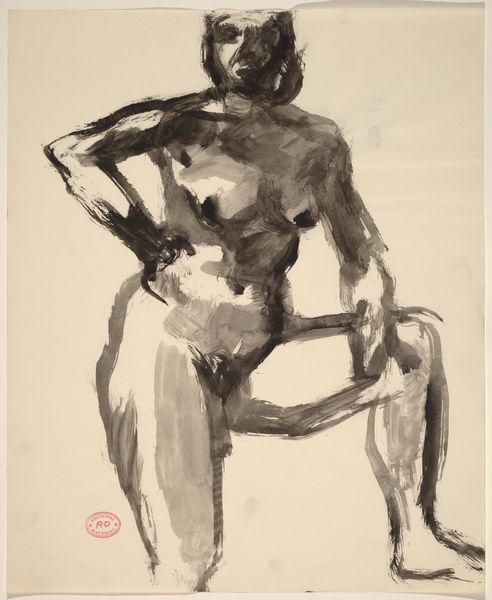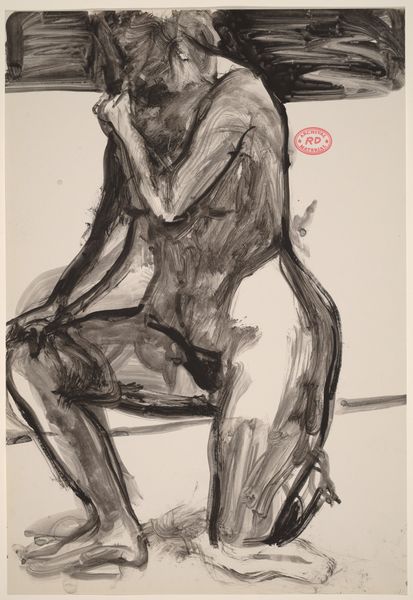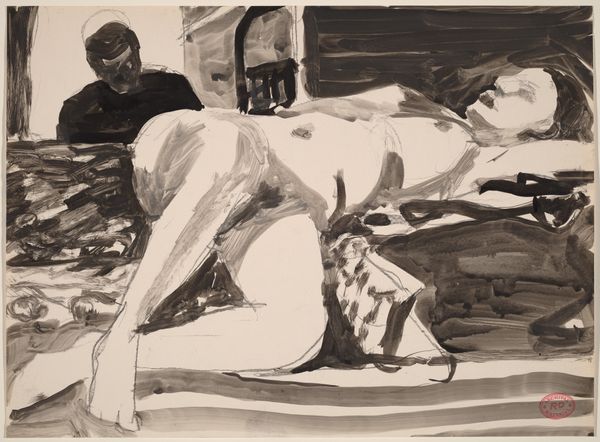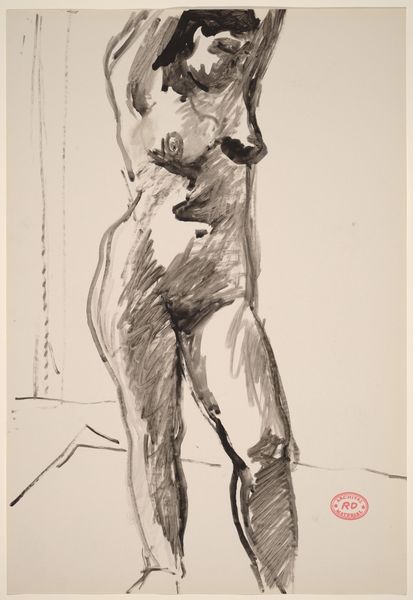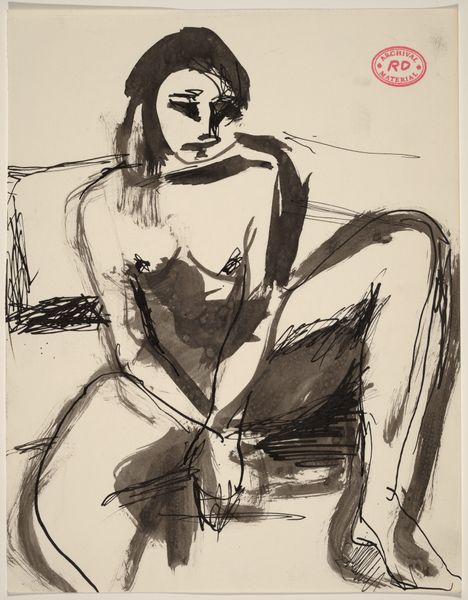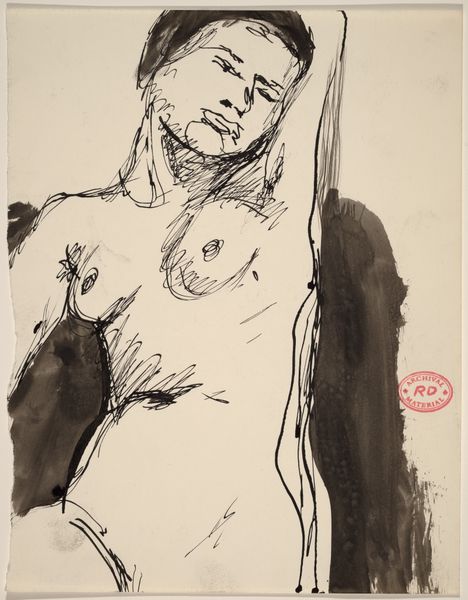![Untitled [woman reclining in a dark outfit] by Richard Diebenkorn](/_next/image?url=https%3A%2F%2Fd2w8kbdekdi1gv.cloudfront.net%2FeyJidWNrZXQiOiAiYXJ0ZXJhLWltYWdlcy1idWNrZXQiLCAia2V5IjogImFydHdvcmtzL2JlMWJiOTJjLWNiZWYtNDNiYS1hZTlmLWQyOTk5YTc1OWY1OC9iZTFiYjkyYy1jYmVmLTQzYmEtYWU5Zi1kMjk5OWE3NTlmNThfZnVsbC5qcGciLCAiZWRpdHMiOiB7InJlc2l6ZSI6IHsid2lkdGgiOiAxOTIwLCAiaGVpZ2h0IjogMTkyMCwgImZpdCI6ICJpbnNpZGUifX19&w=3840&q=75)
drawing, ink, pen
#
portrait
#
abstract-expressionism
#
drawing
#
figuration
#
bay-area-figurative-movement
#
ink
#
pen
#
nude
#
portrait art
#
modernism
Dimensions: overall: 27.8 x 40.6 cm (10 15/16 x 16 in.)
Copyright: National Gallery of Art: CC0 1.0
Curator: Richard Diebenkorn's "Untitled [woman reclining in a dark outfit]", created sometime between 1955 and 1967, is a striking ink and pen drawing that resides within the abstract expressionist tradition. Editor: It’s… intense. The dark ink creates a sense of weight, almost claustrophobia, even though it’s a nude figure reclining. There’s a vulnerability, but also a kind of defiance in the sitter’s gaze. Curator: It’s interesting you say that. The gaze is what holds me too. It challenges the traditional passive nude, doesn't it? We can trace the historical context of Diebenkorn’s move from abstraction toward figuration in the mid-1950s. This drawing signals a critical moment. Editor: Exactly. The post-war period was marked by both anxiety and a push for individual expression. I think you see that conflict embodied here. It isn't just a nude study. The obscured face, the stark contrast of light and shadow…it conveys alienation, maybe even a subtle critique of the male gaze. Curator: Certainly. This drawing moves beyond purely formal considerations to explore complex emotional and social themes. Also, don't you find it telling that this drawing resides within the “portrait” style tag and it contains elements of modernism? It reflects modern portraiture's broader concerns with psychological depth, self-perception, and a fragmented sense of identity. Editor: And let’s not forget the power of suggestion here. It’s more gestural than descriptive; Diebenkorn’s line possesses a brutal honesty, capturing not just the physical form, but perhaps something rawer, more interior. The ink washes and swift strokes suggest a fleeting moment, an uninhibited study free of conventions. Curator: Precisely, and seeing his return to figuration against the backdrop of the dominant Abstract Expressionist movement allows for a unique reevaluation of both representation and abstraction within postwar American art. I'm glad you mentioned his “brutal honesty," because for me, the beauty of Diebenkorn's piece lies precisely in its unapologetic approach. Editor: Yes. This drawing isn't about prettiness; it's a confrontation. It prompts me to think about the female body as a site of struggle, resilience, and self-possession. It reminds us that art can both reflect and resist the norms of its time.
Comments
No comments
Be the first to comment and join the conversation on the ultimate creative platform.

